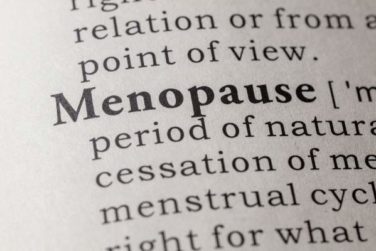An article published on Feb. 29 in JAMA Internal Medicine and the associated editorial questioning the safety, efficacy, and approval of flibanserin are both factually inaccurate and misrepresent the large body of sound scientific data that led to approval by the Food and Drug Administration in August 2015.
Female sexual dysfunction is prevalent. About 40% of women experience low desire and 6%-10% meet criteria for the diagnosis of hypoactive sexual desire disorder (HSDD). The FDA established female sexual dysfunction as an area of unmet medical need. HSDD has a clear, scientifically proven biologic basis. It causes women distress, and often affects a woman’s quality of life and her relationships. We have tools to diagnose HSDD in our office, and finally, we have the first-ever, FDA-approved treatment option for women. The FDA made the correct decision to approve flibanserin based on a careful review of the scientific data.
Flibanserin was approved based on the results of three pivotal trials in more than 11,000 patients documenting statistically significant improvement in sexually satisfying events, improvement in desire, and decrease in distress. As with all FDA-approved medications, flibanserin has side effects and drug interactions, but these are similar to, and in fact less severe than the side effects and drug interactions of other medications, including commonly prescribed antidepressants. The authors correctly conclude that the adverse events in the trials are mild and “reflects positively on the safety of flibanserin” (JAMA Intern Med. 2016 Feb 29. doi: 10.1001/jamainternmed.2015.8565 ).
It should be noted that flibanserin is similar in effectiveness and side effects to many other FDA-approved medications that work on brain neurotransmitters, such as antidepressants. As with other antidepressants, flibanserin is not effective in all women. The editorial’s claim that 90% of treated patients do not respond is factually inaccurate. The data in the pivotal trials demonstrate that 40%-50% of women respond with on average 2.5-4 additional sexually satisfying events over placebo. More significantly, 25% of responders had more than four additional sexually satisfying events per month. The author’s statement that the increase in sexually satisfying events was 0.5 per month is misleading because it includes nonresponders, and data with lower doses of flibanserin that are not effective.
Women are smart and are capable of understanding scientific data about medications including potential risks and potential benefits and of making informed treatment decisions.
I direct a menopause and sexual health clinic, and have prescribed flibanserin to approximately 15 premenopausal women with diagnosed acquired, generalized HSDD over the last 4 months after discussion of the data, the interaction with alcohol, drug interactions, and potential side effects. Similar to the reported data, approximately half of those women have had a robust response. None of the women have had significant side effects. All of the responders have continued the medication. Nonresponders all discontinued the medication after 8 weeks with no untoward effects.
I continue to discuss risk and benefit, and potential adverse effects with all women who remain on the drug in the same way I discuss risk and benefit with ongoing hormone therapy in postmenopausal women.
Prior to the FDA approval of flibanserin, women suffering with HSDD had only untested, unstudied compounded and off-label treatment options with unproven benefits and uncertain risks. Now with an FDA-approved product, patients can be confident about the dose and purity of medication, and are fully informed about the possible side effects and drug interactions as documented in a package insert. For this reason, I view flibanserin as a safer alternative for my patients with HSDD.
Finally, I take issue with the statement in the editorial that “the FDA approved a marginally effective drug for a non–life-threatening condition in the face of substantial – and unnecessary – uncertainty about its dangers” (JAMA Intern Med. 2016 Feb 29. doi: 10.1001/jamainternmed.2016.0073 ). That statement is a gross misrepresentation of the data and the FDA approval process. I was at the FDA when flibanserin was approved, and the FDA approval came after a careful and exhaustive review of the data. Give the FDA the credit it is due for doing the right thing for women based on science, not politics.
Dr. Larkin is director of the UC Health Women’s Center, Cincinnati; advocacy chair and a board member of the International Society for the Study of Women’s Sexual Health ; and scientific chair of Even the Score . She reported one-time advisory work in 2016 for Valeant, the manufacturer of flibanserin.





